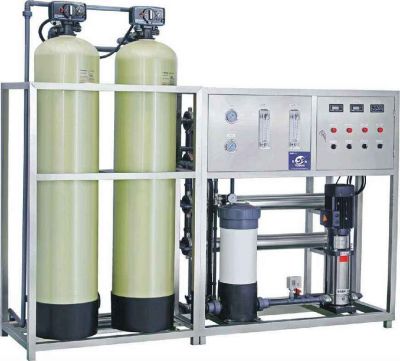Introduction to Reverse Osmosis Equipment

Introduction to Reverse Osmosis Equipment
Reverse osmosis equipment is a device that uses reverse osmosis technology to purify water. Reverse osmosis is a modern and novel water purification technology that separates and purifies water primarily through a reverse osmosis membrane. This membrane has an extremely small pore size of only 1/10000μm, which is equivalent to 1/6000 of the size of Escherichia coli and 1/300 of the size of a virus. It can effectively isolate impurities such as industrial pollutants, heavy metals, bacteria, and viruses that are mixed into the water.
During operation, the equipment first pre-treats the raw water through fine filters, granular activated carbon filters, compressed activated carbon filters, etc. Then, the pump pressurizes the raw water to pass through the reverse osmosis membrane. In this process, due to the pressure difference across the membrane, water molecules pass through the membrane, while salt and other impurities are retained on the other side of the membrane, thus achieving the purpose of purifying the water.
The purity of water produced by reverse osmosis equipment is extremely high, almost reaching 100%, and is therefore widely used in industries such as electronics, industry, medicine, and food that require pure or ultrapure water. Compared with traditional water treatment methods, reverse osmosis equipment does not require heating and has no phase change process, so the energy consumption is lower. At the same time, the equipment is small in size, easy to operate, has a wide range of applications, and relatively low operating costs.
The main components of reverse osmosis equipment:
1. **Pretreatment system**: This is a key part of the reverse osmosis equipment, which is mainly responsible for the preliminary treatment of the raw water to remove suspended solids, particles, colloids, organic matter, heavy metal ions, and other impurities. The pretreatment system includes equipment such as sand filters, activated carbon filters, and softeners.
2. **High-pressure pump**: The high-pressure pump is the power source of the reverse osmosis equipment. Its function is to increase the pressure of the pretreated water so that it can overcome the resistance of the reverse osmosis membrane and pass through it smoothly.
3. **Reverse osmosis membrane**: The reverse osmosis membrane is the core component of the reverse osmosis equipment. Its pore size is very small, allowing only water molecules to pass through, while most dissolved salts, organic matter, heavy metal ions, microorganisms, etc., are retained on one side of the membrane, thus achieving water purification.
4. **Post-treatment system**: The water treated by the reverse osmosis membrane has generally reached a high purity, but sometimes further disinfection treatment is required, such as ozone disinfection, ultraviolet disinfection, etc., to meet specific water quality requirements.
Advantages of reverse osmosis equipment:
1. **High purification efficiency**: Reverse osmosis technology can remove more than 95% of dissolved salts, organic matter, heavy metal ions, and other impurities in water, resulting in high purity of the produced water.
2. **Easy operation**: Reverse osmosis equipment has a high degree of automation, is easy to operate, and is convenient for maintenance.
3. **Low energy consumption**: Compared with traditional water treatment methods, reverse osmosis equipment does not require heating, so the energy consumption is lower.
4. **Environmental protection and energy conservation**: Reverse osmosis equipment does not generate any pollutants during the treatment process, which meets environmental protection requirements.
Application areas of reverse osmosis equipment:
Reverse osmosis equipment is widely used in industrial fields such as electronics, industry, medicine, and food, as well as municipal water supply, pure water production, seawater desalination, and other fields. With the advancement of technology and the improvement of environmental protection requirements, the application prospects of reverse osmosis equipment in the future will be broader.
The above is a detailed introduction to reverse osmosis equipment, hoping to be helpful to you. If you have more questions, please feel free to ask.
